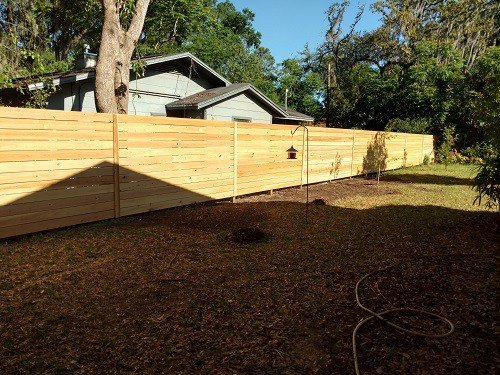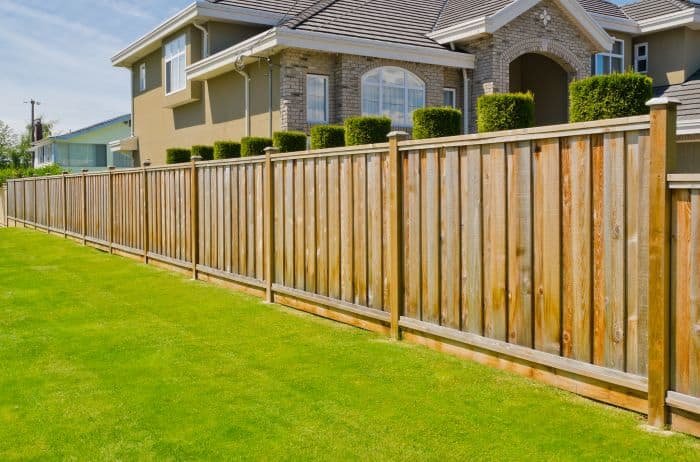Is It Better to Nail or Screw Fence Boards?

If you’re looking at building a new wood fence, you may be asking if you should nail or screw the fence boards. While both will work on a fence if using the proper nail and screws for exterior weather, the answer may be based on price, who is doing the building, weather in your area and even how fast you need to get the fence back up.
Nailing vs Screwing fence boards only apply to wood fence boards being installed on wood fence rails. If you are using anything other than wood for either part of your fence, nailing is not an option.
Let’s take a closer look at each of those items to determine which is best for you.
Table of Contents
Budget for Fence
If you have a tight budget for your fence, then you may want to choose nails. Approximate costs for a polymer coated screw is .05-07 per screw vs .02-03 per hot dipped galvanized framing nail at your local big box store. That doesn’t sound like a lot till you realize how many nails you actually need to build an entire backyard fence.
Our house lot is 1/4 of an acre, which is a typical city lot. The amount of linear feet our new backyard fence will cover is 300 feet, 115 on each side and 70 in the back. A board on board fence (overlapping boards) will need 870 (1×6) wood pickets.
You will need two rails for a 6 foot tall fence and 3 rails for an 8 foot tall fence, which is what we’re building. Each picket for an 8 foot fence will require 6 nails or screws per board, totaling 5,220 nails or screws. Screwing will cost $261-$365 before taxes, while nails will cost $104-$156.
As you can see screws can be a couple hundred dollars more for a typical fence.
Contractor vs DIY
If you decide to hire a contractor to build your new fence, they will charge more to screw your fence pickets, rather than nailing your fence boards. Screwing takes about 2-3 times as long, which you will pay for in labor charges.
If you DIY your fence, then the only difference is the cost of materials between screws and nails and of course the extra time that it takes you.
Weather
This may not apply to all, but if you’re building a wood fence in an area that gets a lot of extreme temperatures that will cause the wood to expand and contract a lot you might want to consider screws instead of nails.
In our Florida weather, we get lots of rain and heat, which is brutal for exterior wood. Screws do a better job of holding wood together during expansion and contraction which occurs when it rains and the board absorbs the water and contracts when it dries out again. Sealing the fence will help stop this, but it will still happen at times.
When the wood board has been nailed, the expansion and contraction will eventually loosen the nail so it isn’t holding the two boards together anymore, very similar to a deck.
Time to Build Fence
If you have animals or small children to keep contained in your backyard, you will need to have your fence back up as fast as possible. Installing fence boards with a nail gun goes by much quicker than screwing each board.
When you use a nail gun, you can hold each fencing board where it needs to be and then shoot the nail in with the other hand. When you screw each board, you have to hold or clamp the board in place, predrill depending on the wood species or hold screw in place, and then drill the screw into the fence rail.
Depending on your level of drilling screws, it can be very difficult unless you have a helper or are able to clamp the board to the fence rail. Even with those two factors, screwing your fence boards is a much slower process.
Conclusion
We’ve presented you with different situations that might help you make the decision whether to screw or nail your fence boards to your fence rails. Honestly, there’s no wrong answer, though many people will dissuade you from one or the other, either one will make a secure backyard fence as long as your use the proper fasteners.






